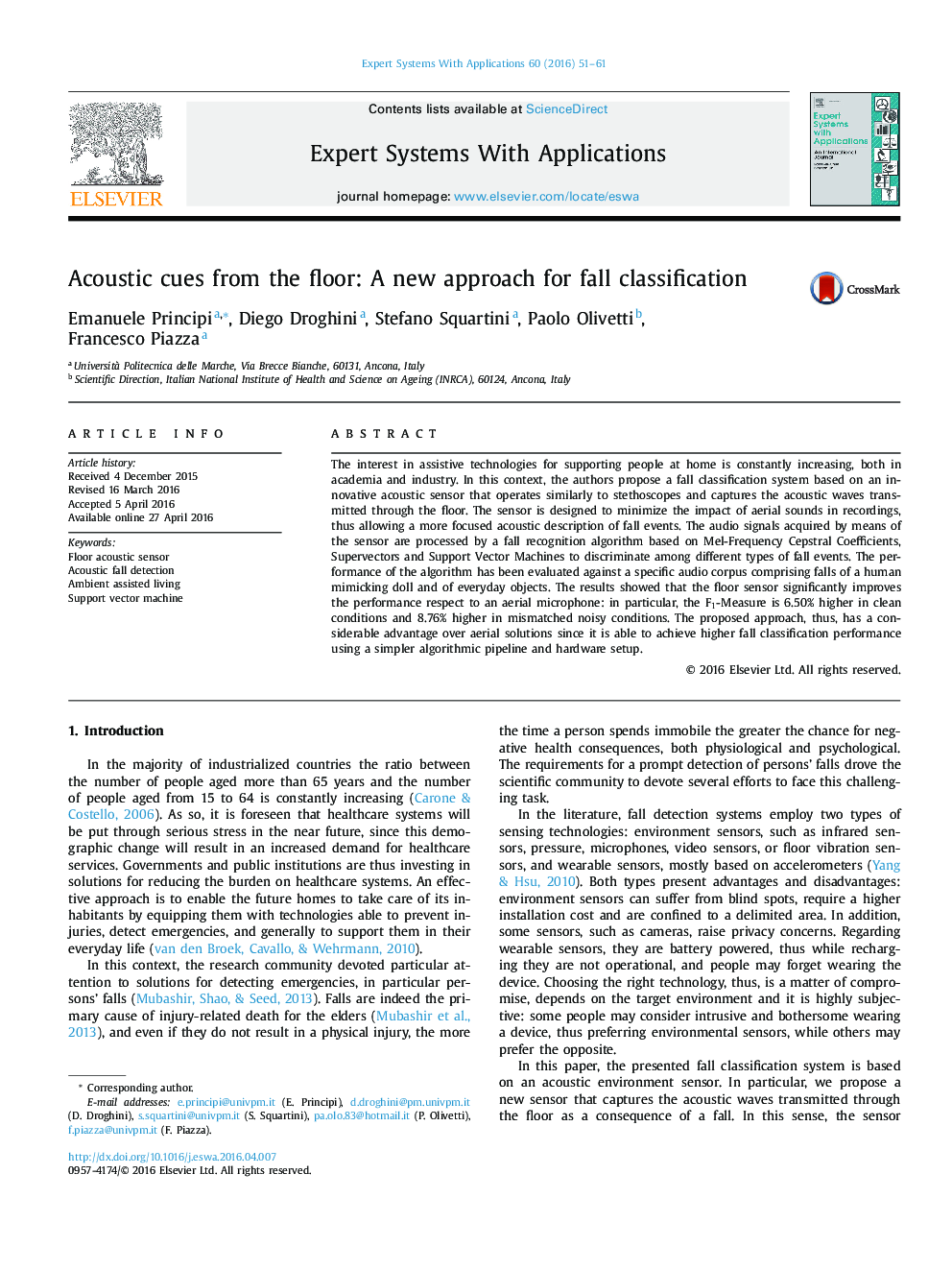| Article ID | Journal | Published Year | Pages | File Type |
|---|---|---|---|---|
| 383106 | Expert Systems with Applications | 2016 | 11 Pages |
•An innovative floor acoustic sensor (FAS) for fall classification is presented.•A classifier based on Support Vector Machine based fall classifier is developed.•A dataset of fall events acquired with FAS and with aerial microphones is described.•The FAS rejects high frequency disturbances and that propagate through the air.•Classification performance in clean and noisy conditions show the FAS superiority.
The interest in assistive technologies for supporting people at home is constantly increasing, both in academia and industry. In this context, the authors propose a fall classification system based on an innovative acoustic sensor that operates similarly to stethoscopes and captures the acoustic waves transmitted through the floor. The sensor is designed to minimize the impact of aerial sounds in recordings, thus allowing a more focused acoustic description of fall events. The audio signals acquired by means of the sensor are processed by a fall recognition algorithm based on Mel-Frequency Cepstral Coefficients, Supervectors and Support Vector Machines to discriminate among different types of fall events. The performance of the algorithm has been evaluated against a specific audio corpus comprising falls of a human mimicking doll and of everyday objects. The results showed that the floor sensor significantly improves the performance respect to an aerial microphone: in particular, the F1-Measure is 6.50% higher in clean conditions and 8.76% higher in mismatched noisy conditions. The proposed approach, thus, has a considerable advantage over aerial solutions since it is able to achieve higher fall classification performance using a simpler algorithmic pipeline and hardware setup.
